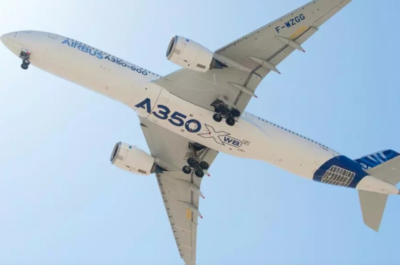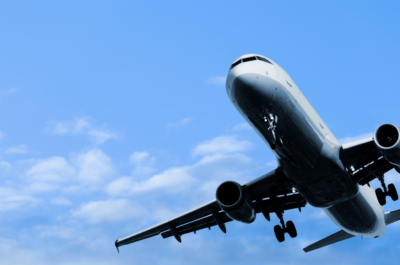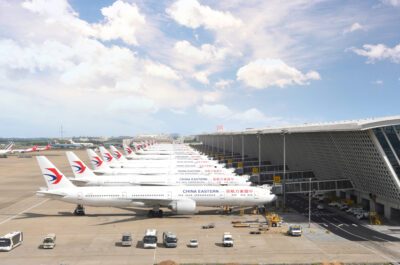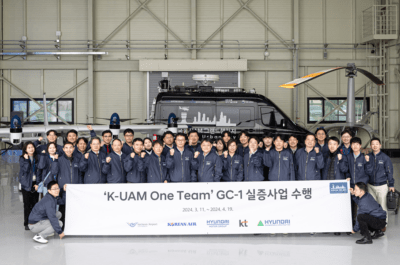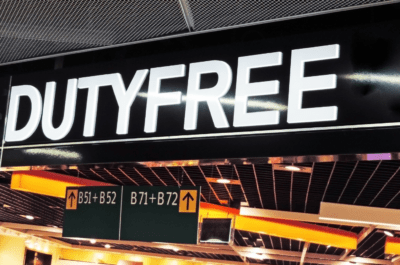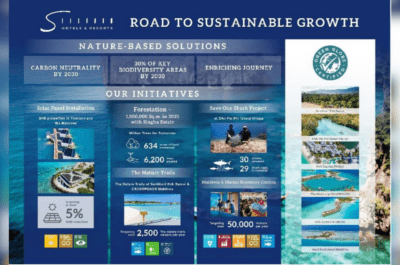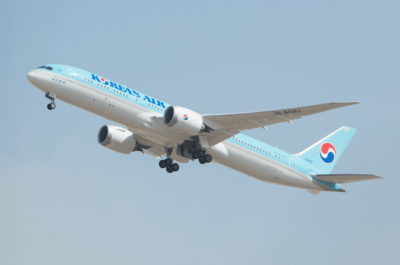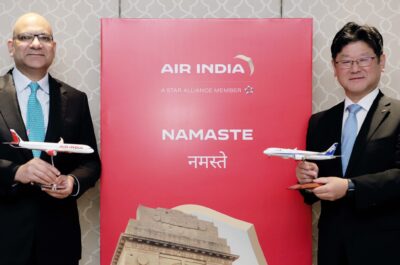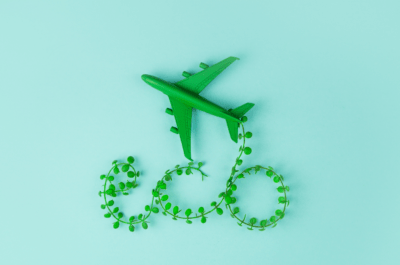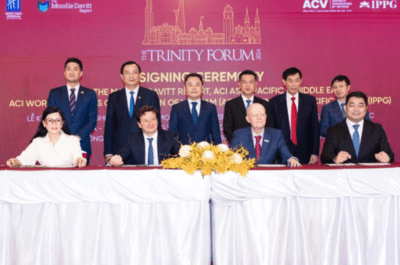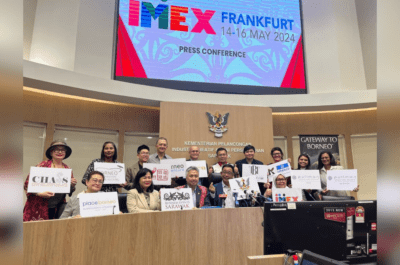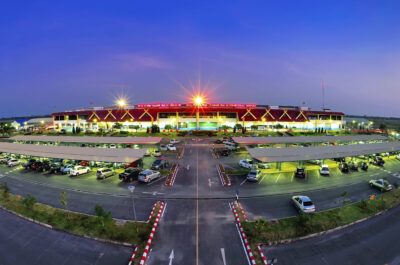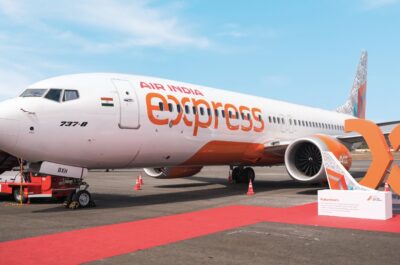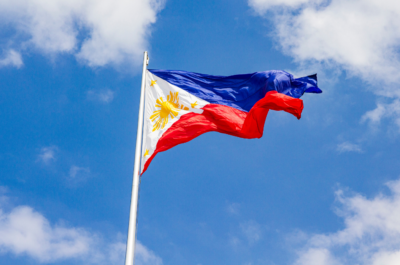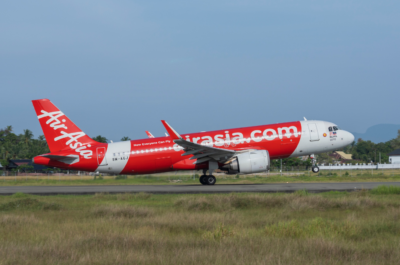…
Let’s talk numbers: today, the world has two major aircraft manufacturers (Airbus and Boeing) and some 900 airlines flying the skies. Many of these worldwide airlines have embraced air alliances to rationalise industry forces. Originally conceived as an efficient marketing tool to pool together resources and attract a larger share of international travellers, the alliances developed in the late 1990s into a more flexible version of multinational airlines.
Under an alliance, airlines are grouped within a relatively loose cooperative structure,
providing common services and flight interconnections. However, carriers can retain their individual image, their own product characteristics and a unique growth strategy.
Star Alliance was the industry’s first true alliance, created in 1997 on the initiative of Lufthansa and SAS in Europe, United Airlines and Air Canada in North America, and also joined by Thai Airways. Oneworld was the next alliance to follow suit, formed in 1998 by British Airways/American Airlines and Swissair’s Qualiflyer.
Even if never formally announced, the Wings alliance of the duo KLM-Northwest became proactive in 1999. Finally, Skyteam, officially launched in 2000, is the most recently created alliance, comprising Air France, Delta Airlines, Aeromexico and Korean Air.
Over the last decade, the alliances have been growing. Star Alliance has expanded the most rapidly, increasing the number of its members from five in 1997 to 18 today. Skyteam more than doubled in size, going from four to nine carriers in just six years.
Oneworld airline members grew from five to eight between 1998 and 2006. “To be considered as a global player today is to be part of an alliance,” declares Thierry Antinori,Vice President Sales and Marketing for Lufthansa.
After existing for almost a decade, alliances today are essential elements of the air industry, reshaping most of its operations step by step. Even if the three major alliances include just under 40 carriers all together, this already accounts for almost 50% of all passengers flown around the world and 46% of all available seats per week. Five years ago, the three alliances only had a 42% market share of all available seats per week. In 2005, alliances accounted for some 80% of the total world airline capacity (measured in available seat kilometres), with 19 of the world’s 20 biggest airlines already signed up.
As more airlines join alliances, carriers have the power to reshape bilateral agreements by pooling together codeshare flights, negotiating modifications of their booking tools with global distribution systems (GDS), creating economies of scale for their supplies with common purchasing, and pushing airport authorities to provide alliances with ‘tailor-made’ air facilities.
As alliances remain an efficient marketing and communications tool, they also help to promote destinations on a worldwide scale. “If alliances raised questions or generated doubts in the nineties, all these feelings have since disappeared. Everyone in our industry is now conscious that he/she must be a member of one of the three existing alliances. Alliances bring stability, longevity and the promise of a better service to our customers. The future goes definitely through alliances,” explains Jean Cyril Spinetta, CEO and President of the Air France/KLM Group.
Airlines have been able to substantially reduce their costs through alliances. Common purchasing for fuel, on-board service and commodity items (like catering, headsets or blankets), and the implementation of alliance norms for engineering or new technologies pay off. According to John McCulloch, Oneworld Managing Partner, its alliance helped to reduce cost for its members by US$250 million in 2005.
“The alliance evolves from a pure marketing to a management tool,” adds McCulloch. “Oneworld sales generated, in 2005, US$850 million, of which almost two-thirds were ‘incremental.’ And interlining represented 7.5 million passengers and generated US$ 1.5 billion.”
Codesharing between members of the same alliance is considered a positive way to rebalance economics between airlines. “A successful alliance needs a permanent structural frame as we permanently have to ponder costs between airlines. We all have different cost and wage structures, fluctuating parities in foreign exchange and various working legislations. We can cushion some of these inequalities through codeshare or joint venture services within the alliance frame,” says Spinetta. “We would love to deepen, for example, our relation with Vietnam Airlines. However, how do we absorb the cost of operational differences between Air France and VN, except through a joint venture operation? We could then find the right formula to combine the best of us – Vietnam Airlines’ operating costs and Air France’s ticket revenues.”
HOW DO CUSTOMERS BENEFIT FROM ALLIANCES?
If airlines see the benefit of being part of an alliance, what about the passengers? Alliances claim to greatly improve services to their customers. Star Alliance CEO Jaan Albrecht recently depicted a bleak image of air travel prior to the creation of alliances:
“Before Star Alliance, global travel was complex and inconvenient. Connections were uncoordinated, problematic and time consuming.” While it was not quite this much of a dark age – interlining and baggage transfer agreements between airlines did exist – it is true that a certain number of benefits have been added over the years.
These include:
- Improved number of connections
- Combined fares
- New technologies
- Alliance-dedicated facilities
- Common recognition of passengers
Each alliance network covers between 700 and 850 destinations around the world through connecting flights at major hubs. No single airline could possibly propose such choice and, for the first time, the world traveller benefits from a truly global network.
Interlining fares providing the possibility to travel with all the airlines of the same alliance are now available. Alliances have recently launched special round-the-world fares. Since August, Oneworld’s revamped website includes a special section for travel agents to check on its corporate and consumer fare products.
Some of the concrete steps taken to improve service through technology include common electronic ticket provisions, e-services on the Internet, electronic timetables, and common self-service kiosks for check-in and automatic luggage transfer.
Increasingly, alliances are moving into a single terminal, providing passengers with facilities under one roof. In Asia, Star Alliance has already moved into the same terminal at Tokyo Narita, Nagoya, and will soon do the same in Bangkok. Oneworld offers common facilities in Hong Kong SAR and soon in Tokyo Narita.
Alliance frequent flyer programmes give members the option to accumulate and redeem miles or points on any alliance member airline, and give mutual recognition of an Elite status. They also pool common lounge use.
ALLIANCES PROSPER IN COUNTRIES WITH A LIBERAL AVIATION POLICY
The driving forces of most alliances are generally European carriers and their North American counterparts. This is no surprise as both North America and Europe are the most mature markets, respectively generating 36.2% and 30.4% of all passengers in
2005.
Despite some restrictions on a complete open-sky agreement, airlines between the European Union and the US are more or less free to serve a large number of cities.
Asia generated 17.9% of all passengers in 2005 and is perceived as the fastest growing air market in the world. This growth comes mainly from the emergence of both China (PRC) and India. In 2005, half of the growth in air passengers was generated by China (PRC).Bilateral agreements are the rule for most countries in Asia – except in Singapore and Malaysia, and partially in Hong Kong SAR and Thailand, where there exists an open-sky or liberal policy in traffic rights.
Consequently, alliances are shifting more and more of their interest to the Asian continent. Star Alliance already dominates Asia among the alliances. The grouping includes some of the biggest players in the region, with All Nippon Airways, Korea’s Asiana, Singapore Airlines and Thai Airways International all on board. In September 2006, 24.9% of available seats per week (among all Star Alliance partners) originated in or were destined for Asia. The Star Alliance lounge presence at Asian airports is also impressive.
However, Asia is still under-represented in terms of seat capacities for the two other alliances. Skyteam has a paltry performance, with only 9.4% of its total capacity injected in Asia. Oneworld does slightly better, with 10% of its total capacity falling in the region. And, by integrating JAL (one of the largest airlines in the world) early next year, the British Airways-led alliance will soon strengthen its market share. For instance, if JAL’s weekly seat capacity was already integrated into Oneworld, Asia’s market share would reach 14.5%. Following JAL’s entrance in Oneworld, Tokyo will be the only destination in Asia where the three alliances compete through hub operations: Star Alliance supports All Nippon Airways, Skyteam supports Northwest and Oneworld supports JAL.
Until now, Skyteam has been the slowest to take foot in the continent and remains the weaker alliance in the region. “With our Korean partner and our links from Paris and Amsterdam to Asia, we already cover 90% of all travellers’ needs in terms of connection,” claims Spinetta, for Air France/KLM. This might be true, but Skyteam is nonetheless almost completely absent in intra-Asian connections. It has the lowest presence in most of the large Asian hubs, for example representing only 1.8% of all weekly seat capacities in Singapore and 2.7% in Hong Kong SAR (data from SRS Analyser, September 2006).
Table 1:Market share of alliances in Available Seat Kilometres (ASK) and in Revenue Passenger Kilometres (RPK)


Table 2: Alliances’ regional capacities within Asia (weekly seat capacities, Sept 2006)

COURTING CHINA (PRC) AND INDIA
Skyteam’s situation will definitely change in 2007, when China Southern is set to join the alliance. With the new Chinese partner, Asia would then represent 20% of Skyteam’s seat capacities. The battle between alliances has already started, particularly in attempts to take a stronger foothold in both China (PRC) and India. Some of these manoeuvres won’t become concrete until 2008. Besides China Southern joining Skyteam, Oneworld will probably integrate Dragonair, as Cathay Pacific (a founding member of Oneworld) recently took control of the regional carrier.
INCREASED COOPERATION BETWEEN TOURISM AND ALLIANCES
As alliances all around the globe become a driving force of the airline industry, they increasingly play an active role in promoting destinations. Star Alliance has been the most proactive so far.
“We tend to promote special fares and emphasise destinations in road shows or presentations around the world every year,” explains Alastair Carthews, Director of Corporate Affairs Asia/Pacific for Star Alliance. “We have lately been very active in Asia. With Visa, we promoted in 2003 ‘Yokoso Japan’, a Japanese government’s initiative to attract more foreign tourists to the country.” Member carriers implemented promotional domestic airfares, “Visit Japan airfares” for foreign guests, and also offered attractive wholesale package tours.
“We repeated the same type of promotion earlier this year with Thailand, in a bid to support the country’s post-tsunami recovery,” adds Carthews. Similarly, when SARS hit Hong Kong SAR in 2003, Oneworld pledged support to the city with special fares and promotional packages from its member airlines. With the emergence of new destinations within Asia Pacific, alliances could make use of their global coverage and play an even greater role in fostering tourism to the region.
Star Alliance has already announced that it will integrate two new partners in 2008, Air China and Shanghai Airlines. The last big Chinese carrier, China Eastern, has been developing a strong partnership with Air France for the past few years. Based on this, it could either work with Skyteam, or it could be tempted to go with Oneworld.
India is another attractive market. Since the country has embarked on a liberal aviation policy, air traffic is rapidly surging, and each of the major alliances is trying to get a piece of the pie.
“There are many potential partners in India,” explains John McCulloch. “We will be very pleased to work with an Indian carrier, but we will not make a decision in the short-term.”
According to Air France CEO, Jean Cyril Spinetta, all alliances will wait for the merger of State carriers Indian Airlines and Air India, which the Government has announced many times, but which has not materialised as of yet. “Once Air India gains the domestic network of Indian Airlines, the airline will offer great perspectives,” adds Spinetta.
ASIA HAS THE LARGEST NUMBER OF NON-ALIGNED MAJOR AIRLINES
There are many potential alliance members in Asia. So far, the continent has the highest number of ‘non-aligned’ large carriers: China Airlines and Eva Air in Chinese Taipei, Garuda in Indonesia, Jet Airways in India, Philippine Airlines, Sri Lankan, Vietnam Airlines and Malaysia Airlines. The latter could join Skyteam, despite having been previously denied by the alliance.
The current MAS restructuring process will push back any decision until 2008, at the earliest. Vietnam Airlines, with its long history with Air France, could also be another potential Skyteam partner. It is important to note that Southeast Asia lacks potential for alliances. Despite the region’s large population, the Southeast Asian market is dominated by one-way traffic (incoming markets) because locals generally have limited purchasing power – for the moment at least – to travel to supra-regional destinations. Star Alliance has already captured the airlines with the largest potential, Singapore Airlines and Thai Airways.
Table 3: Market share of alliances at selected airports in AsiaPacific (weekly seat capacities, Sept 2006)

Table 4: Alliances in comparison (2006)

Table 5: Growth of the alliances (number of member airlines)
DO LOW-COST AIRLINES AND ALLIANCES REALLY OPPOSE EACH OTHER?
Alliances are a strategic answer from legacy/network carriers to the rise of the low-cost airline (LCA) segment. Both bipolarise the airline’s industry today. Alliances build their strength from a global vision of air transport, building on the ability to provide people
with ways to fly from one point to another via connection knots, or the hubs. In contrast, LCAs are meant to provide the simplest expression of air travel: flying from point A to point B and vice versa. The first offers sophisticated tools and services to provide a seamless travel experience on various airlines; the second aims to simplify services to offer the lowest fares.
Antagonism can be very deep between alliances and LCAs, as illustrated by the Aer Lingus case. Initially joining Oneworld in 2000, Aer Lingus has recently converted a legacy carrier into a pure LCA, and will leave the alliance by early 2007. In a statement, Aer Lingus CEO Dermont Mannion declared that “the Alliance membership has inevitably become less relevant for the airline over time, with an increasing number of customers utilising our new direct services at low fares.”
However, are LCAs and alliances completely incompatible? The Canadian LCA WestJet is believed to have started negotiating with Oneworld, which lacks a partner in Canada since Canadian Airlines was absorbed by Air Canada. There are already tacit connections
between both industry players. For example, the German LCA Germanwings has already signed an agreement with Centralwings (of LOT), and has a loose marketing cooperation with Bmibaby (of BMI). All three airlines are members of Star Alliance. Therefore, it is possible that parallel ‘second-tier’ alliances might be formed between LCAs affiliated with a major carrier.
THE MIDDLE EAST REMAINS TERRA INCOGNITA
If alliances want to conquer the world, they still seem to show a relative weakness in the Middle East. In terms of coverage, most of the large cities in the Gulf are served by the three alliances, especially for flights out of Europe and Asia. Skyteam is the strongest in the region thanks to the long-standing presence of Air France and KLM in the area: Skyteam currently flies to 13 destinations around the Gulf.
However, the weakness of Oneworld, Skyteam and Star Alliance in the region is due to the absence of Middle Eastern carriers in alliances. Rumours circulate regularly about the possible integration of airlines, but to this day, they remain unrealised and somewhat unfounded. Last year’s speculation about an eventual agreement between Qatar Airways and Lufthansa leading to a possible integration into Star Alliance is one example.
“Airlines like Emirates or Qatar Airways are fierce competitors, practising dumping prices to fill up their capacities. I do not see any synergy with carriers from the Gulf for the time being,” justifies Thierry Antinori, for Lufthansa.
Though alliances do not seem interested in the Gulf giants like Emirates or Qatar Airways, they are still looking for partnerships with airlines along the Mediterranean shores. Lebanon’s national carrier, MEA, should become an associate member of Skyteam in 2007; Royal Jordanian will also become a full member of Oneworld in 2007. Additionally, rumours indicate that Egypt Air has started negotiating with Star Alliance. All of these East Mediterranean partners seem ideal for alliances as they appear to better complement each alliance’s existing network.
TravelDailyNews Asia-Pacific editorial team has an experience of over 35 years in B2B travel journalism as well as in tourism & hospitality marketing and communications.



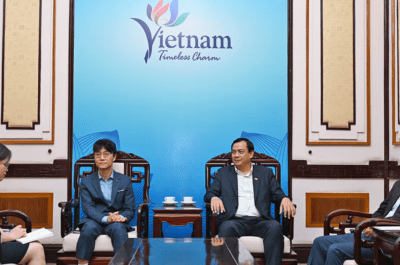

![[PR] PR_Ascott and Vimut Hospital_2024](https://www.traveldailynews.asia/wp-content/uploads/2024/04/PR-PR_Ascott-and-Vimut-Hospital_2024-400x265.jpg)










